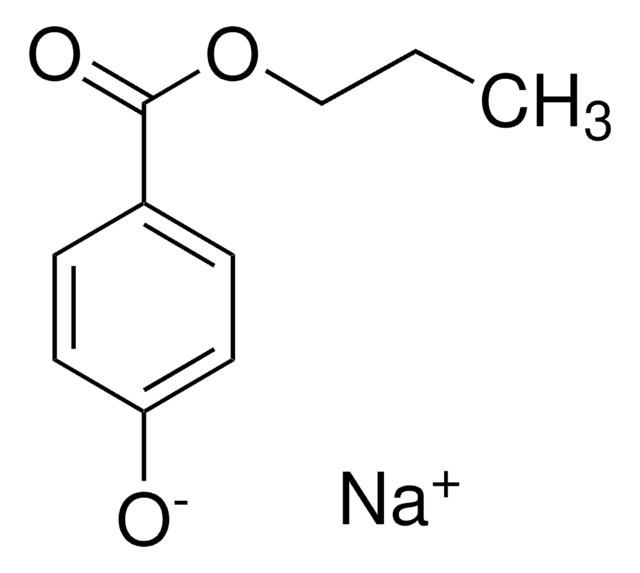W295101
Propyl 4-hydroxybenzoate
≥99%
Synonym(s):
4-Hydroxybenzoic acid propyl ester, Propyl paraben
About This Item
Recommended Products
biological source
synthetic
grade
Fragrance grade
Agency
follows IFRA guidelines
reg. compliance
EU Regulation 1223/2009
Assay
≥99%
mp
95-98 °C (lit.)
application(s)
flavors and fragrances
Documentation
see Safety & Documentation for available documents
food allergen
no known allergens
Organoleptic
burnt; smoky
SMILES string
CCCOC(=O)c1ccc(O)cc1
InChI
1S/C10H12O3/c1-2-7-13-10(12)8-3-5-9(11)6-4-8/h3-6,11H,2,7H2,1H3
InChI key
QELSKZZBTMNZEB-UHFFFAOYSA-N
Looking for similar products? Visit Product Comparison Guide
General description
Hazard Statements
Precautionary Statements
Hazard Classifications
Aquatic Chronic 3
Storage Class Code
11 - Combustible Solids
WGK
WGK 1
Flash Point(F)
356.0 °F
Flash Point(C)
180 °C
Personal Protective Equipment
Certificates of Analysis (COA)
Search for Certificates of Analysis (COA) by entering the products Lot/Batch Number. Lot and Batch Numbers can be found on a product’s label following the words ‘Lot’ or ‘Batch’.
Already Own This Product?
Find documentation for the products that you have recently purchased in the Document Library.
Customers Also Viewed
Our team of scientists has experience in all areas of research including Life Science, Material Science, Chemical Synthesis, Chromatography, Analytical and many others.
Contact Technical Service






